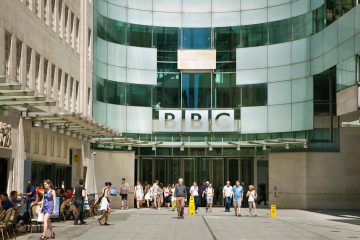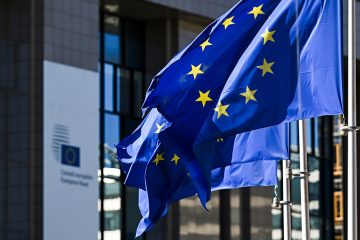| Symbol | Last | Change | % | High | Low |
|---|---|---|---|---|---|
| GBP / SAR | 5.0162 | +0.0004 | +0.01% | 5.0162 | 5.0199 |
| Close | GMT Time : Sat Dec 13 2025 01:50 | ||||
GBP/SAR : Intraday Live Chart
GBP/SAR : Technical Signal Buy & Sell
| 5 Min Signal | 1 Hour Signal | 1 Day Signal |
|---|---|---|
| Buy | Sell | Buy |
GBP/SAR : Moving Averages
| Period | MA 20 | MA 50 | MA 100 |
|---|---|---|---|
| 5 Minutes | 5.02 | 5.01 | 5.01 |
| 1 Hour | 5.02 | 5.02 | 5.01 |
| 1 Day | 4.98 | 4.95 | 5.00 |
| 1 Week | 5.01 | 4.94 | 4.85 |
GBP/SAR : Technical Resistance Level
| Resistance 1 - R1 | Resistance 2 - R2 | Resistance 3 - r3 |
|---|---|---|
| 5.0150 | 5.0125 | 5.0113 |
GBP/SAR : Technical Support Level
| Support 1 - S1 | Support 2 - S2 | Support 3 - S3 |
|---|---|---|
| 5.0187 | 5.0199 | 5.0224 |
GBP/SAR : Periodical High, Low & Average
| Period | High Change from Last | Low Change from Last | Average Change from Last |
|---|---|---|---|
| 1 Week | 5.0255 -0.0093 | 0.0000 +5.0162 | 5.0085 +0.0077 |
| 1 Month | 5.0255 -0.0093 | 0.0000 +5.0162 | 4.9600 +0.0562 |
| 3 Month | 5.1223 -0.1061 | 0.0000 +5.0162 | 4.9920 +0.0242 |
| 6 Month | 5.1554 -0.1392 | 0.0000 +5.0162 | 5.0005 +0.0157 |
| 1 Year | 5.1554 -0.1392 | 0.0000 +5.0162 | 4.9049 +0.1113 |
GBP/SAR : Historical Chart
GBP to SAR Exchange Rate History: A Steady Peg vs. a Shifting Pound
The GBP to SAR exchange rate reflects the dynamic between the highly liquid, free-floating British Pound (GBP) and the Saudi Riyal (SAR), which is tightly pegged to the US Dollar. This means that movements in the GBP/SAR pair are primarily driven by fluctuations in the Pound relative to the Dollar, as well as by interest rate differentials and geopolitical shifts. Over the past three decades, GBP/SAR has oscillated in a predictable yet event-sensitive range due to the fixed nature of the Riyal.
1991–2000: Gulf Stability Meets UK Inflation
During the 1990s:
The Saudi Riyal remained firmly pegged at 3.75 to the USD, ensuring exchange rate predictability.
The UK, meanwhile, was recovering from early 1990s recession and navigating post-ERM (Exchange Rate Mechanism) adjustments.
Key highlights:
GBP/SAR fluctuated between 5.00 and 6.00, mainly driven by GBP/USD volatility.
Saudi Arabia’s oil exports provided current account surpluses, supporting the peg.
2001–2008: Oil Boom and GBP Upsurge
The early 2000s saw:
A commodity super-cycle, pushing oil prices (and Saudi revenues) higher.
The UK benefited from strong consumer spending and stable growth under Tony Blair’s government.
In this period:
GBP appreciated vs USD, leading to a rise in GBP/SAR from around 5.50 to 7.40 by 2007.
This marked the highest GBP/SAR levels in decades, aided by global investor confidence in the UK economy.
2009–2013: Post-Crisis Volatility
The 2008 global financial crisis caused a dramatic revaluation in most currencies.
The Pound weakened sharply in 2008–2009, pushing GBP/SAR down to below 5.50.
Saudi Arabia maintained its peg, using vast FX reserves to weather global shocks.
During this phase:
The pair ranged between 5.40 and 6.00, reflecting the UK’s quantitative easing policy and slow recovery.
SAR remained remarkably stable, showing the strength of its dollar peg.
2014–2019: Brexit Casts a Shadow
The mid-2010s were dominated by:
UK political and economic uncertainty due to the 2016 Brexit referendum.
Continued strong oil-linked revenues in Saudi Arabia despite global crude price fluctuations.
Effects on GBP/SAR:
The rate fell sharply to near 4.60 in mid-2016, one of the lowest levels in decades.
After initial panic, the Pound gradually recovered, bringing GBP/SAR to around 5.00–5.20 by 2019.
2020–2024: Pandemic, Inflation, and Resilience
The pandemic and subsequent inflationary spike defined the most recent chapter.
The UK faced high inflation and political turbulence, but also aggressive rate hikes by the Bank of England.
Saudi Arabia navigated oil price swings, Vision 2030 reforms, and maintained fiscal stability.
Key movements:
GBP/SAR climbed back toward 5.00–5.40 during 2022–2023, driven by BoE’s hawkish stance.
The pair remains largely dictated by GBP/USD trends, as the Riyal’s peg remains intact.
✅ Key
🟢 = GBP appreciated vs SAR
❌ = GBP depreciated vs SAR
⚠️ = Sideways / neutral trend
📊 GBP to SAR Exchange Rate by Decade
| Decade | Avg. GBP/SAR Rate (Approx) | Change vs. Previous Decade | Key Drivers |
|---|---|---|---|
| 1991–2000 | 5.00 – 6.00 | ⚠️ Mild GBP swings | UK inflation control, SAR peg to USD maintained |
| 2001–2008 | 5.80 – 7.40 | 🟢 GBP appreciated | Strong UK growth, Pound strength vs USD |
| 2009–2013 | 5.40 – 6.00 | ❌ GBP depreciated | Post-crisis GBP weakness, SAR stability |
| 2014–2019 | 4.60 – 5.20 | ❌ GBP declined | Brexit volatility weighed heavily on GBP |
| 2020–2024 | 5.00 – 5.40 | 🟢 GBP recovery | BoE rate hikes, UK inflation, SAR pegged resilience |
While the Saudi Riyal’s peg to the US Dollar ensures a high degree of stability, the GBP/SAR pair will continue to reflect swings in global sentiment toward the British economy. Future volatility will depend largely on:
UK fiscal and monetary policy,
US Dollar performance (due to the peg),
Oil market fluctuations, and
Regional geopolitical developments.
GBP/SAR - British Pound / Saudi Riyal Currency Rate
Live Price of GBP/SAR. GBP/SAR Live Chart, Intraday & Historical Live Chart, Buy Sell Signal, GBP/SAR News, GBP/SAR Averages, Returns & Historical Data
» GBP/SAR
» GBP/SAR Real Time Quotes
» GBP/SAR Live Chart
» GBP/SAR Intraday Chart
» GBP/SAR Historical Chart
» GBP/SAR Buy Sell Signal
» GBP/SAR News
» GBP/SAR Videos
» GBP/SAR Averages
» GBP/SAR Currency Pair
» GBP/SAR Historical Data










